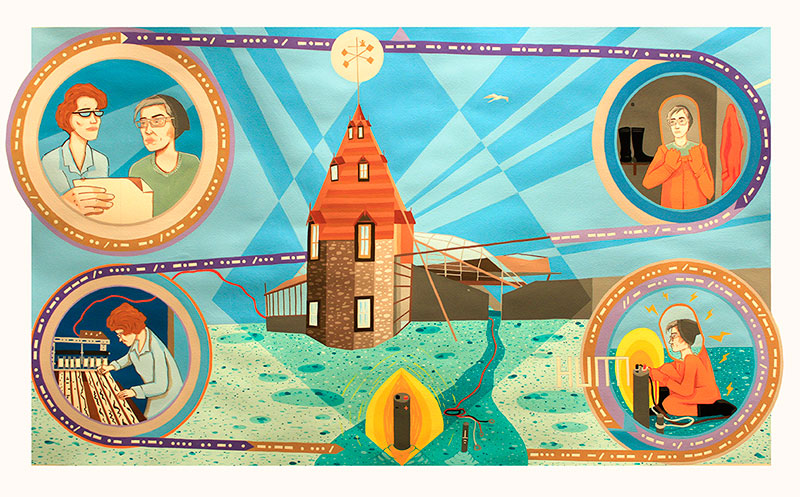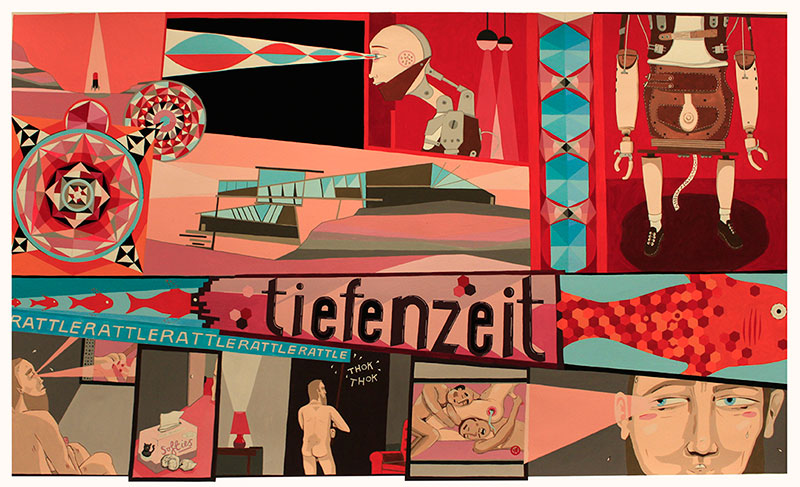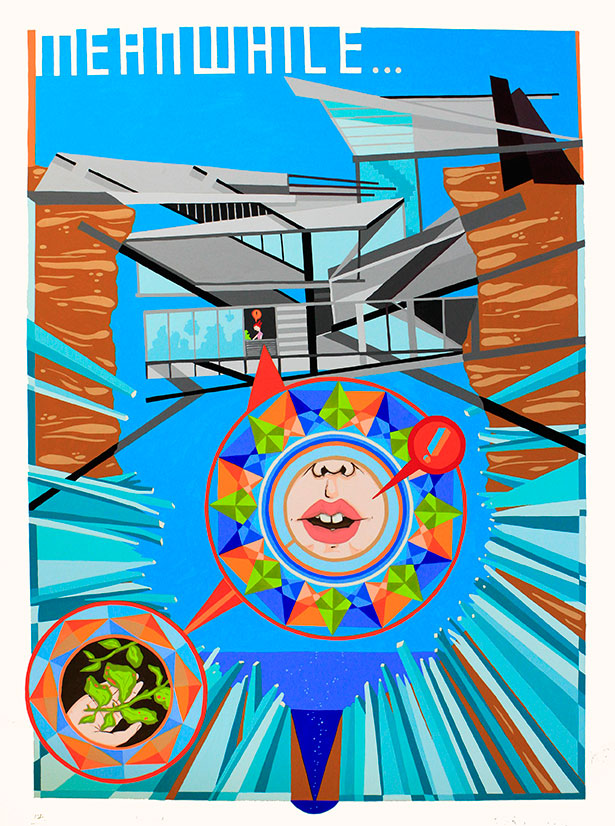
In 2015 Tricky Walsh spent three months in London on an Australia Council funded residency researching the pioneering optical synthesizer of the late English sound engineer Daphne Oram, along with various sites and examples of twentieth century technology. She describes the effect of this experience as “being completely overwhelmed by the breadth and depth of London’s technological history”, gathering a full gamut of experience and stimuli before returning to Tasmania. The culmination of this experience is Contemporary Art Tasmania’s annual solo artist exhibition: Tiefenzeit is an extraordinary amalgamation of sculptural works, paintings, sounds and smells on a scale as epic as it is compelling. In this exhibition, Walsh presents a series of 28 graphic-narrative gouache paintings titled “Tiefenzeit”; a scattering of transistor radios and receivers emitting a loud, atonal score of static and sound; a carved wooden reconfiguration of the three-piece Oramics Machine with electrical components; a second wooden replica of an early optical telegraph with four glass flasks holding a range of scents; and a small set of carved wooden prosthetic robot arms and radio, referenced in the paintings.
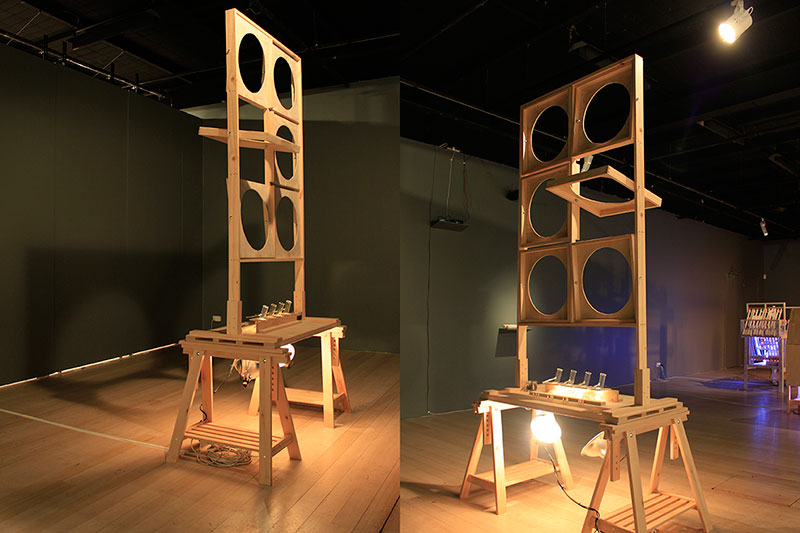
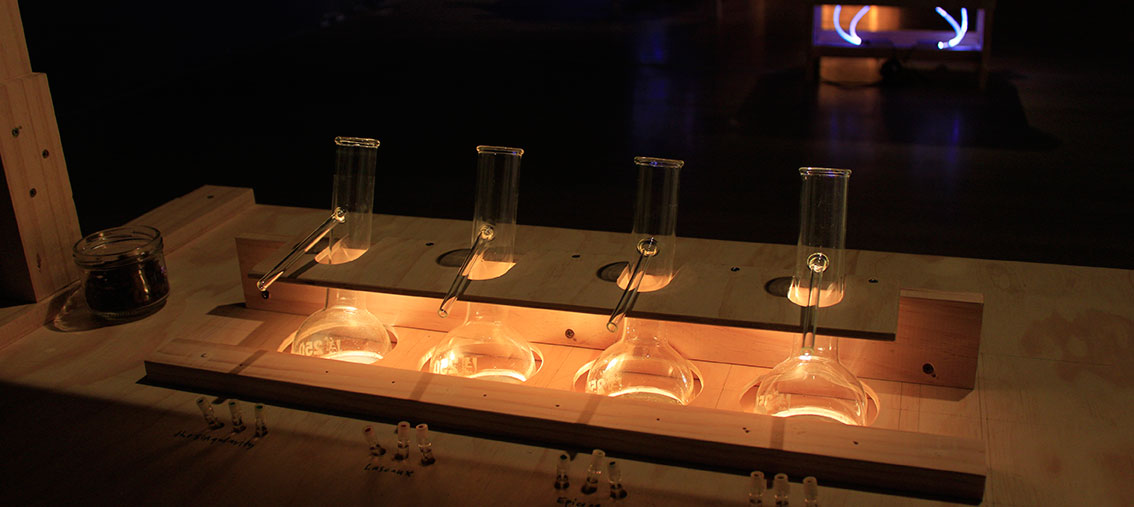
Experiencing Tiefenzeit is a little like entering another atmosphere. It ushers you into a space where there is no central focus, but rather a vast transmission field bearing multiple instruments of communication and co-ordination. In this field, various tensions and signals are set into play between sounds and smells, the heightened colours and animated geometries of the paintings, the bleached woods and lit elements of the sculptures, all creating an intoxicating effect somewhere between the intensity of a psychedelic trip and the seriousness of an archeological dig. From the meticulously carved components of her sculptures to her conceptual vision linking the continually evolving present with the geological concept of Tiefenzeit (deep time in German), Walsh’s attention to detail is profound. The blend of smells, sounds and richly worked surfaces offer a carefully mediated set of propositions based on principles of translation and synthesis across timeframes, cultures, speculative fictions and historical worlds.
Designed and built by Daphne Oram, the Oramics Machine was the first electronic synthesizer, laying the foundations for machine-based methods of translating hand-drawn notation into sound. While Walsh refers to the work of Oram and other historical objects, she seems less concerned with the past than with the nature of invention. The combination of bleached woods and illuminated componentry in her sculptures does not simply echo the original, but focuses our attention on the light that is still on, the impulse in the relic that remains alive. Despite the homage paid to Oram, Walsh has little time for nostalgia or pathos, preferring to focus on the cumulative effects of such inventions in the present and our persistent desire to invent new technologies. These cultivated scenes of tiny humans tending the daily mechanics of history and the inclusion of perfumes in the optical telegraph, suggest animating forces that maintain the relic in the present, unlocking memory and engineering new connections.
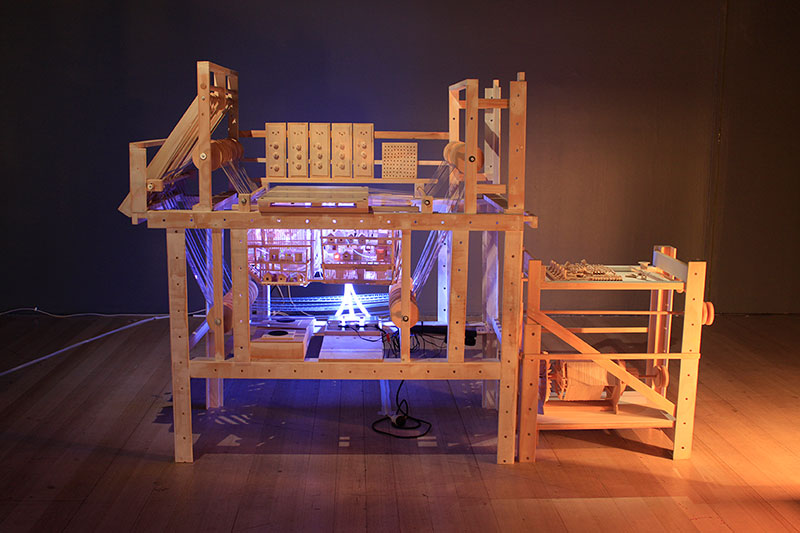
.jpg)
The arrangement of the gouache series suggests a linear narrative but its conceptual content offers a spatial framework of interlocking parallel worlds and continuous geo-temporal boundaries. The themes are reminiscent of an epic quest with the actions and desires of her characters played out against historical references such as Ebenezer’s utopic garden cities, the organic relic of Pugachov’s Oak and coded glyphs promising access to other worlds. Amidst nuanced commentaries on gender, power, technology and human fragility, the series is punctuated by bright geometric forms evoking a continual search for new directions, new clicks on the compass. Fuelled by the dramatic tension of the animated strip, the momentum is not driven by the literal meaning of the imagery; rather, the series conveys the sense that it is itself a machine activating something new – a new code or set of principles, a new vision. The machinic intensity seems to level with that of the soundscape as the equivalent of Oram’s audiovisual intent, the score is not just a soundtrack to the series but its vital translation.
Daphne Oram began building her Oramics machine in 1957 amidst the hopes of the new world and the deep wounds of war. Such tensions seem to flicker across the bright kaleidoscopic visions of Tiefenzeit, its fragmented landscapes and encoded worlds. In Walsh’s decoder rings and silent communication devices, I am reminded of Anne Balsamo’s idea of feminism as the secret agent of social change, the stealthy operator whose voice is not always understood directly and who, despite being an embodied presence, must operate indirectly to effect meaning in the world. There is something of this double logic in Walsh’s works as they evoke the structure of the code in which the secret to decoding is contained, the continual influence of history on the present, the struggle for equilibrium against the risk of infection or infiltration, the moments of subjective desire in the glare of utopian visions and inevitable obsolescence. Amidst all her meticulous crafting, the cumulative effect of noise and industry in Tiefenzeit carves out a new mode of transmission between two women across two centuries and cultures, a conversation in the strata of deep time.
